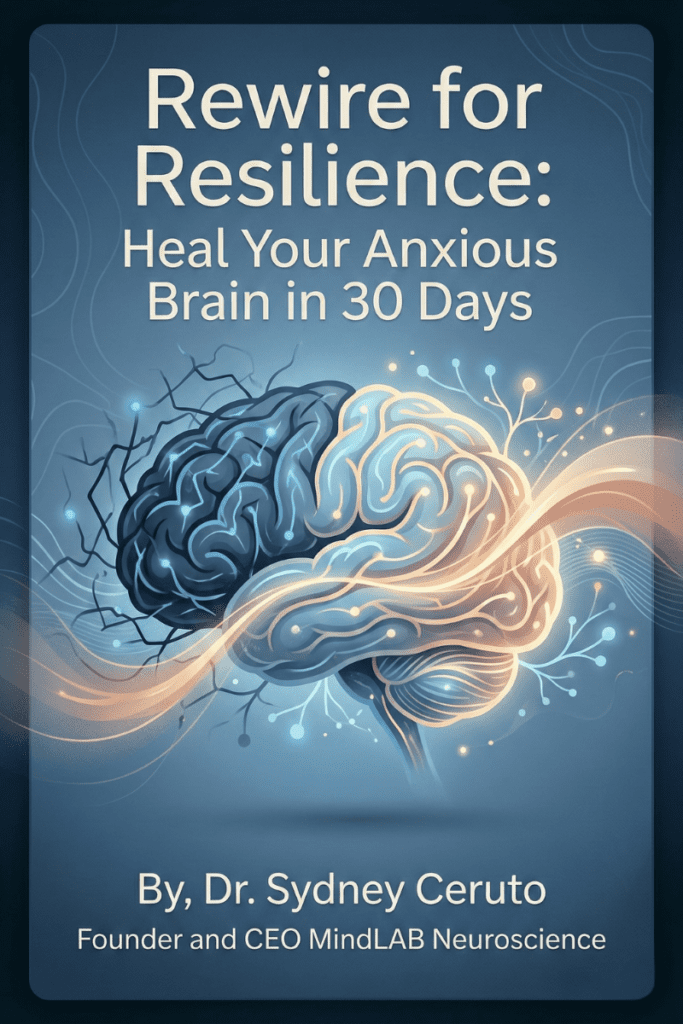The intricate dance of brain chemicals during sex is a marvel of neuroscience, revealing the profound ways our neural pathways respond to intimate encounters. As two bodies intertwine, a cascade of neurotransmitters and hormones surge through the brain, painting a vivid picture of pleasure, connection, and emotion. Delving deep into the realm of neuroplasticity, it’s fascinating to observe how these intimate moments can rewire our brain’s architecture, strengthening certain connections while weakening others.
The brain, often hailed as the body’s most enigmatic organ, undergoes a series of complex changes during sexual activity. From the initial spark of attraction to the afterglow of satisfaction, various brain chemicals play pivotal roles in shaping our experiences. Dopamine, for instance, drives pleasure and reward, while oxytocin fosters bonding and closeness. These chemicals, among others, work in tandem, orchestrating a symphony of sensations that resonate through our neural pathways.
Understanding the role of brain chemicals during sex not only demystifies the science behind our most intimate moments but also underscores the incredible adaptability of our neural networks. As we continue to explore the depths of neuroscience, we gain a deeper appreciation for the profound ways our brains adapt, evolve, and transform in response to our experiences.
Understanding Brain Chemicals During Sex: Setting the Neuroscientific Stage
The human brain, a marvel of biology, is a hub of countless neural connections and chemical reactions. When we delve into the topic of intimacy, it’s essential to understand the role of brain chemicals during sex and how they influence our emotions, sensations, and overall experience. From a neuroscientific perspective, these chemicals are not just abstract concepts; they are tangible entities that have profound effects on our well-being.
Sexual activity triggers a cascade of neurotransmitters in the brain. These are chemical messengers that transmit signals between neurons, and the brain’s nerve cells. Some of the most prominent neurotransmitters involved in sexual activity include dopamine, responsible for pleasure and reward, and oxytocin, often referred to as the “love hormone.” These chemicals play a pivotal role in the feelings of euphoria, connection, and satisfaction that often accompany intimate moments.
Furthermore, the concept of neuroplasticity is crucial when discussing brain chemicals during sex. Neuroplasticity refers to the brain’s ability to reorganize itself by forming new neural connections. Intimate experiences, like other significant life events, can influence this rewiring process, shaping our neural pathways and, consequently, our behaviors, emotions, and memories.
In essence, the brain’s response to sexual activity is a symphony of chemical reactions and neural adaptations. As we journey through this article, we’ll uncover the fascinating details of this intricate dance, shedding light on the profound ways our brain reacts to intimate encounters.
Fact 1 – The Neurophysiology of the Sexual Cycle: From Arousal to Afterglow

The sexual cycle, a journey from initial arousal to the concluding afterglow, is a complex interplay of brain chemicals and neural responses. Understanding this cycle from a neuroscientific lens offers profound insights into the human experience of intimacy.
- Arousal: The initial phase of the sexual cycle is marked by heightened sensitivity and increased blood flow to specific regions. Neurologically, this is when the brain starts releasing a cocktail of neurotransmitters. Dopamine, often associated with pleasure and reward, surges, setting the stage for the experiences to come.
- Plateau: As arousal intensifies, the brain’s neurochemical activity becomes more pronounced. The release of norepinephrine increases heart rate and blood pressure, preparing the body for the climax. Simultaneously, the brain’s serotonin levels modulate mood and behavior, ensuring a balance between excitement and relaxation.
- Orgasm: The pinnacle of the sexual cycle, orgasm is a burst of euphoric sensations. At this moment, the brain releases a flood of oxytocin and vasopressin. These chemicals not only intensify pleasure but also foster a sense of bonding and closeness with the partner.
- Resolution & Afterglow: Post orgasm, the body begins to return to its baseline state. However, the brain remains active. Endorphins, the body’s natural painkillers, are released, leading to feelings of relaxation and contentment. This phase, often referred to as the afterglow, is characterized by a sense of well-being and emotional intimacy.
The neurophysiology of the sexual cycle is a testament to the brain’s incredible adaptability and complexity. Every phase, from arousal to the afterglow, is a result of intricate neural pathways and brain chemicals during sex working in harmony, orchestrating an experience that is both deeply personal and universally human.
Fact 2 – Dopamine or Serotonin? The Dominant Neurotransmitters in Intimacy Unveiled
When discussing brain chemicals during sex, two neurotransmitters often take center stage: dopamine and serotonin. These chemicals, while distinct in their functions, play pivotal roles in shaping our intimate experiences. Let’s delve into their neuroscientific significance during intimate moments.
Dopamine: Often dubbed the “pleasure molecule,” dopamine is intrinsically linked to feelings of pleasure, reward, and motivation. During intimate encounters, dopamine levels surge, especially during the arousal and plateau phases. This neurotransmitter is responsible for the feelings of excitement, anticipation, and euphoric sensations that accompany sexual activity. It’s the driving force behind our desire to seek out pleasurable experiences, making it a key player in the realm of intimacy.
Serotonin: Contrary to dopamine’s excitatory role, serotonin acts as a mood stabilizer. It’s essential for maintaining a balance between heightened arousal and relaxation. While dopamine pushes the body towards climax, serotonin ensures that the journey is smooth, modulating mood, and keeping anxiety at bay. Post-intimacy, serotonin aids in the feelings of contentment and well-being, contributing to the afterglow that many experience.
The interplay between dopamine and serotonin is a delicate dance. While dopamine drives the desire and pleasure associated with intimacy, serotonin ensures emotional balance and contentment. Together, they create a harmonious experience, highlighting the brain’s intricate design and the profound impact of brain chemicals during sex on our emotional and physical well-being.
Fact 3 – The Brain’s Response to Passion: What Truly Happens During Those Intimate Moments
The allure of passion, often described in poetic and artistic expressions, has a deeply rooted neuroscientific basis. When we explore the brain’s response during intimate moments, we uncover a symphony of brain chemicals during sex that shape our perceptions, sensations, and emotions.
Neural Activation: As passion intensifies, specific regions of the brain become more active. The amygdala and the hippocampus, associated with emotions and memory, respectively, play crucial roles. They process the emotional significance of the encounter and store memories, ensuring that moments of intimacy are etched in our minds.
Endorphins and Euphoria: Beyond dopamine and serotonin, the brain releases endorphins during intimate moments. These natural painkillers contribute to the euphoric sensations experienced during passion, acting as mood enhancers and promoting feelings of pleasure and satisfaction.
Neuroplasticity in Action: Passionate encounters can influence the brain’s neuroplasticity. Repeated intimate experiences can strengthen certain neural pathways, reinforcing behaviors and emotions associated with those moments. Over time, our brain adapts, evolving its responses to similar stimuli, showcasing the dynamic nature of our neural architecture.
The Role of Pheromones: While often overlooked, pheromones play a subtle yet significant role in attraction and intimacy. These chemical signals, detected by the brain’s olfactory system, can influence our perceptions of potential partners, adding another layer to the brain’s multifaceted response to passion.
In essence, the brain’s reaction to intimate moments is a complex interplay of chemicals, emotions, and neural pathways. Each passionate encounter offers a glimpse into the brain’s incredible capacity to feel, adapt, and evolve, emphasizing the profound influence of brain chemicals during sex on our holistic well-being.
Fact 4 – The Euphoria of Orgasm: Unraveling the Neurochemical Changes

The climax of intimate encounters, the orgasm, is a moment of intense pleasure and release. But what transpires in the brain during this pinnacle of passion? The answer lies in the intricate ballet of brain chemicals during sex that orchestrates this euphoric experience.
The Dopamine Peak: As one approaches orgasm, dopamine levels in the brain reach their zenith. This surge is responsible for the heightened sense of pleasure and the overwhelming sensations that characterize the climax. It’s dopamine that makes the orgasmic experience so rewarding and sought-after.
Oxytocin and Bonding: Immediately following the dopamine peak, the brain releases a flood of oxytocin. Often termed the “bonding hormone” or “love hormone,” oxytocin fosters feelings of closeness, attachment, and trust. It’s this chemical that deepens the emotional connection between partners post orgasm.
Endorphins and Relaxation: Post-climax, the brain’s endorphin release contributes to feelings of relaxation, contentment, and well-being. These natural painkillers alleviate any discomfort and promote a sense of calm, leading to the serene state many experience after orgasm.
Neural Rewiring and Memory: The orgasmic experience, being a significant emotional and physical event, can influence the brain’s neural pathways. Through the process of neuroplasticity, these moments can leave lasting imprints on our neural architecture, shaping future responses to similar stimuli.
The Prolactin Effect: Another lesser-known player in the post-orgasmic phase is prolactin. This hormone counterbalances dopamine’s effects, leading to feelings of satiation and refractory periods where arousal is reduced.
In summary, the orgasm is not just a fleeting moment of pleasure; it’s a neurochemical masterpiece. The myriad of brain chemicals during sex that come into play during this phase underscores the brain’s complexity and its ability to create profound emotional and physical experiences.
Fact 5 – The Unique Chemical Release: Understanding the Euphoria Post-Orgasm
While the climax is a pinnacle of pleasure, the moments that follow are equally intriguing from a neuroscientific standpoint. The post-orgasmic phase, often characterized by a sense of euphoria and relaxation, is orchestrated by a unique release of brain chemicals during sex.
The Serotonin Calm: After the intense dopamine-driven pleasure of orgasm, serotonin levels in the brain rise. This neurotransmitter, known for its mood-regulating properties, brings about feelings of contentment, happiness, and relaxation. It’s the calming counter to the excitement of climax.
Vasopressin and Intimacy: Alongside oxytocin, another hormone, vasopressin, is released post-orgasm. This hormone is associated with feelings of territoriality and protective behavior. In the context of intimate relationships, it can foster a sense of protectiveness and deeper bonding between partners.
GABA and Restfulness: Gamma-aminobutyric acid (GABA), a neurotransmitter, also sees an uptick post-orgasm. GABA is known for its inhibitory functions in the brain, promoting relaxation and reducing neural excitability. This contributes to the restful and sometimes sleepy feeling many experience after intimacy.
Endocannabinoids and Bliss: The brain also releases endocannabinoids post-orgasm. These neurotransmitters are linked to the sensation of bliss and can enhance the overall feeling of well-being and satisfaction after intimate moments.
Neuroplasticity and Future Encounters: The post-orgasmic phase, rich in emotional and physical sensations, can influence the rewiring of neural pathways. These experiences, when repeated, can shape future responses, preferences, and behaviors during subsequent intimate encounters.
In essence, the moments following the climax offer a window into the brain’s incredible ability to balance pleasure with relaxation. The diverse array of brain chemicals during sex that come into play post-orgasm showcases the brain’s intricate design and its role in shaping our post-intimate experiences.
Fact 6 – Men vs. Women: Contrasting Brain and Body Responses Before, During, and After Intimacy

The experience of intimacy, while universally human, can vary significantly between genders. From a neuroscientific perspective, the differences in how men’s and women’s brains respond to sexual stimuli and the subsequent release of brain chemicals during sex offer fascinating insights.
Differences in Arousal Patterns: Men typically exhibit a more rapid arousal response, with a quicker surge in dopamine levels. This rapid response is often linked to visual stimuli. Women, on the other hand, might have a more complex arousal pattern, influenced by emotional, physical, and situational factors. Their dopamine surge can be more sustained and less immediate.
Oxytocin and Emotional Bonding: While both genders release oxytocin during intimacy, women generally release higher amounts, especially after orgasm. This increased oxytocin release can lead to stronger feelings of bonding and attachment in women post-intimacy.
Endorphin Release and Pain Threshold: Women often experience a higher release of endorphins during intimacy, which can increase their pain threshold. This is particularly significant during events like childbirth, where endorphin release plays a crucial role in managing pain.
Neuroplasticity and Memory Formation: Intimate experiences can influence the neural pathways differently in men and women. Women might form stronger emotional memories linked to intimate moments, thanks to the combined effects of oxytocin and serotonin. Men influenced more by dopamine might have memories more closely tied to the pleasure aspect.
Post-Intimate Refractory Periods: Men typically have a more pronounced refractory period post-orgasm, during which arousal is reduced due to a surge in prolactin. Women might not have as distinct a refractory period, allowing for potential multiple climaxes in a shorter duration.
In conclusion, while the fundamental neurochemical processes during intimacy are consistent across genders, the nuances in how men’s and women’s brains and bodies respond highlight the intricate interplay of biology, chemistry, and experience. Recognizing these differences, shaped by the dance of brain chemicals during sex, deepens our understanding of human sexuality from a neuroscientific lens.
Fact 7 – The Emotional and Physical Symphony: How Brain and Body Harmonize in Sexual Encounters
Sexual intimacy is more than just a physical act; it’s an intricate blend of emotional and physical responses, all orchestrated by the brain. The release of brain chemicals during sex plays a pivotal role in ensuring this harmony, creating an experience that’s both profound and deeply personal.
The Brain’s Role in Physical Sensations: Neurons in the brain communicate with sensory receptors in the skin, relaying touch, temperature, and pressure. As intimacy progresses, the brain interprets these signals, leading to heightened physical sensations. Neurotransmitters like dopamine amplify these sensations, making every touch and caress feel more intense.
Emotional Resonance and Intimacy: Emotions are deeply intertwined with sexual experiences. The brain, particularly regions like the amygdala, processes emotional responses during intimacy. Neurotransmitters such as serotonin and oxytocin play roles in modulating mood, and fostering feelings of happiness, connection, and emotional depth.
The Interplay of Anticipation and Reward: The brain’s reward system, primarily driven by dopamine, is active during sexual encounters. The anticipation of pleasure, combined with the actual experience, creates a feedback loop. This loop reinforces the desire for intimacy, making it a rewarding and sought-after experience.
Neuroplasticity and Adaptation: Repeated intimate experiences can influence the brain’s neural pathways. Through the process of neuroplasticity, the brain adapts, refining its responses to sexual stimuli. Over time, this can shape preferences, desires, and even emotional responses to intimacy.
Harmonizing Emotion and Physiology: The brain ensures a balance between emotional and physical responses. While neurotransmitters modulate mood and emotion, hormones like adrenaline and cortisol regulate physiological responses, ensuring that the body and mind are in sync.
In essence, sexual intimacy is a testament to the brain’s incredible capability to harmonize emotional and physical experiences. The release of brain chemicals during sex, combined with neural responses, creates a symphony of sensations, emotions, and memories, making each intimate encounter unique and memorable.
Beyond the Facts: The Broader Impacts of Sexual Activity on Mental and Emotional Well-being

While the immediate neurochemical responses to intimacy are captivating, the broader impacts of sexual activity on mental and emotional health are equally significant. Engaging in intimate encounters can have lasting effects on one’s psyche, shaping self-perception, emotional health, and interpersonal relationships.
Enhanced Mood and Reduced Stress: Sexual activity leads to the release of endorphins and oxytocin, both of which are known mood enhancers. These chemicals can alleviate feelings of stress and anxiety, promoting relaxation and a sense of well-being. Over time, regular intimate encounters can serve as a natural mood stabilizer, helping combat the effects of daily stressors.
Boosted Self-esteem and Body Image: Positive intimate experiences can bolster one’s self-esteem and body image. The brain chemicals during sex, combined with the emotional validation of being desired, can reinforce positive self-perceptions. This can lead to a healthier body image and improved self-worth.
Strengthened Emotional Bonds: Oxytocin, often referred to as the bonding hormone, fosters feelings of closeness and attachment. Engaging in intimate encounters can strengthen emotional bonds between partners, fostering trust, understanding, and mutual respect.
Cognitive Benefits: Beyond emotional well-being, sexual activity can also offer cognitive benefits. The increased blood flow to the brain during intimacy can enhance cognitive function, improving focus and clarity. Additionally, the neuroplastic changes influenced by regular intimate encounters can promote neural health, potentially delaying cognitive decline in later years.
Holistic Health and Longevity: Several studies have suggested that regular sexual activity can contribute to holistic health, potentially increasing longevity. The combined benefits of stress reduction, improved mood, enhanced cognitive function, and strengthened emotional bonds can contribute to overall health and well-being.
In summary, while the immediate neurochemical dance during intimacy is fascinating, the long-term impacts of sexual activity on mental and emotional health are profound. Recognizing these broader benefits underscores the importance of understanding the role of brain chemicals during sex in shaping our holistic well-being.
#brainchemicalsduringsex #neuroscientificperspective #dopamineeffects #serotoninbalance #oxytocinbonding #endorphinrelease #neuroplasticityinintimacy #sexualcycle #emotionalresonance #physicalsymphony #arousalneurology #postorgasmiceuphoria #menwomenbraindifferences #intimatewellbeing #cognitivebenefits #emotionalwellbeing #neuralpathways #vasopressinrelease #gabaandrelaxation #endocannabinoidbliss





